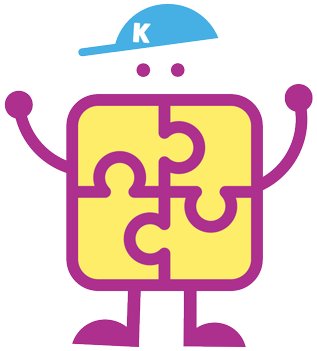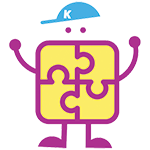How to set boundaries for kids
Many parents tell us they do not enjoy parenting. As a result, they often battle with their kids. There is a lot of fighting, negotiating, and punishments, but this does not lead to a change in behavior: the same fights over and over and no end in sight.
This often occurs when parents are not setting or following through on clear limits and boundaries. It can be challenging to set clear boundaries, and many parents struggle with this.
Learning how to set boundaries is not intuitive, though. It is a learned skill. But once you know how to set limits and boundaries, you will have a much easier time parenting. There will be fewer battles and much more joy in your relationship with your kids.
Tips for setting healthy boundaries for your kids
We all want our kids to be happy. No one likes to see their kids angry or upset. It can be challenging to wrap your head around setting limits and keeping your kids happy at the same time. But kids and their parents thrive when there are clear expectations and follow through. I promise there is less fighting and calmer when kids know what to expect from their behavior and how we will react to it.
If you can learn the skill of setting and sticking to fair, frim and consistent limits, you will develop a mutually respectful relationship with your kids that you have always desired. Learning how to set boundaries is critical.
Your child goes from 0-60
Do you walk around on eggshells trying to avoid tantrums? The littlest things often set off your kids. You do not know what to say or how to say it, so your kids listen to you and cooperate. You’re at your wit’s end and don’t have the energy to deal with another full-blown outburst?
Does this all sound familiar, but you do not know how to set boundaries?
An essential thing to consider is sleep. When your child isn’t getting enough quality or quantity of sleep, they are far more likely to misbehave. Therefore, make sure you proactively ensure your child gets enough rest to avoid the need to parent reactively.
Clear limits and healthy boundaries make your child feel safe and comfortable.
It can be challenging to set boundaries, and many parents think their children will hate it if they set limits. However, setting boundaries makes your child feel safe and secure. When a child knows the limits, they also know how to meet your expectations and please you. By setting firm and clear boundaries, you help your child feel in control and have a sense of accomplishment.
Here are things you need to know about limits and boundaries:
- Your kids WANT you to set them. That is why they are misbehaving. They are pushing against the lack of structure and clear expectations.
- Healthy boundaries should be concrete, clear and consistent (3C’s boundaries)
- Boundaries give your child a sense of ease and safety.
- Set boundaries decrease anxiety in kids and adults.
- Boundaries allow your child to see how to please you.
- They help your child learn how to meet your expectations.
- They help prevent unwanted behavior.
Three tips for setting your own boundaries your kids will understand
Setting limits can be challenging. However, once you start shifting your approach, it will get easier! Unfortunately, it does take some practice and time to become a seasoned healthy boundaries setter! Follow these three tips to set clear limits and quickly stop your struggle with boundaries.
- Set boundaries in advance
- Teach your child upfront
- Follow-through
Creating Boundaries in Real Life
Ideally, all of your healthy boundaries are clear, concrete, and consistent (3 C’s of boundaries). The boundaries should be black and white with each limit. If you do not follow the 3 Cs with your boundaries, you enter the “grey zone.” In the grey zone, your child is unaware of how to please you and does not know how to meet your expectations. Then you are likely to see more whining, tantrums and pushback.
Grey zone boundaries lead to power struggles.
Black and white limits lead to easy parenting.

Examples of setting healthy boundaries
Example 1: mealtime
Let’s imagine your child keeps leaving the dinner table. You are tired of asking them to sit down over and over, and every meal ends in crying, throwing food, and a power struggle. Each time your child leaves the table, a battle ensues. Asking your child over and over to sit down gives them negative attention and power. Your child will continue to leave the table and engage in this struggle because it works for them. They are getting the attention they are looking for.
Instead, I recommend you follow the three tips to set limits. Set up your 3 C boundaries in advance and reinforce these with role modelling, practice and planning. Remember to follow through every time.
Before the next meal, explain to your child the new rules,
“From now on, we are going to have a new rule when we are eating. When eating the meal, your bum needs to stay in your chair. If you are done eating and leave the chair, the meal is done, and your food will not be returned to you. The next time you eat is breakfast. Can you please tell me what our new plan is?”
Your child should be able to repeat back what the new plan is. You know that they heard you and understand. It is now your job to follow through at mealtime. Your child will learn to trust you and see you are committed to what you laid out. You are setting limits and sticking to them.
Note: It is critical to practice and role model this behavior too. If you leave the table over and over, your child will not see a problem in imitating you. Sit down, and enjoy the family meal. We want your child to understand your expectations!
Example 2: screen time
Many parents struggle with their children refusing to turn off their devices. Some parents say their child is obsessed and doesn’t want to do anything else. So every time you turn off the device, there is a yelling match, and a battle ensues.
Instead, let’s set up healthy boundaries in advance. Then, we are going to role model and practice this new approach.

Try saying the following when the screen is not around, ‘From now on, we are setting new boundaries around screen time. We will set a timer when we decide you have had screen time. When the timer goes off, you must turn off the device. If you do not turn off the device when the timer goes off or fight with me about it, you tell me that you do not want to use your device tomorrow. If we battle, you will not get the device tomorrow. Can you please tell me what the new plan is?”
Your child should repeat back the new plan. You now know they heard you and understand the approach. Tomorrow, when your child gets their device, and for all other days in the future, you must follow through so your child trusts you are setting limits and sticking to them. It would be best if you held your child and you accountable. You set your own boundaries, so make sure you follow through on them.
Important points on setting boundaries:
- Make sure the limits you set are fair.
- Ensure the set boundaries are appropriate with their age and stage
- Ensure you set reasonable consequences (such as time to calm down or other consequences.
FAQ – Frequently Asked Questions
How do I go about setting boundaries?
Healthy boundaries are so important when developing a solid relationship with our kids. It fosters mental well-being in our kids, who, believe it or not, thrive on consistency and rigid boundaries. Healthy boundaries make kids feel safe and secure. Personal and emotional boundaries create consistency for kids.
Personal and emotional boundaries help create a consistent and predictable environment for kids to foster well-being. Physical boundaries are also very important to foster healthy relationships. Personal boundaries allow a child to recognize they need to protect their own lives and personal limits. They should respect boundaries for themselves and others. Boundary setting is an essential skill for kids to learn and can encourage mental well-being. Kids in term will have higher self-esteem and higher self-worth.
How can setting boundaries foster mental health?
Setting boundaries is beneficial for kids and adults. Kids can protect their mental health by recognizing they need space, physically and emotionally, in personal relationships. This can start by seeing family members setting their own personal and emotional boundaries. This may feel uncomfortable at first, but boundary setting can be very beneficial in maintaining mental well-being. Healthy boundaries lead to clear expectations for both parties. They help foster healthy relationships with family members, intimate partners and friends. Maintaining boundaries and protecting personal space in our personal lives can be a great way to role model healthy boundaries for our kids. Establish healthy boundaries in your own life to improve your well-being and set your child p for success in their own life setting boundaries.
Is it helpful to set healthy boundaries at work as well?
Setting boundaries, including professional boundaries, can also help in your professional life. Strong boundaries can protect your well-being and mental health. Setting boundaries at work can teach colleagues and coworkers specific ways to interact with you, and you will respond appropriately if those emotional boundaries are maintained. There is no need to feel guilty. Be clear and explicitly state that setting boundaries on your personal space and time is important for your mental health. Better boundaries at work and at home can help you live a healthy life within your own limits.
#YouGotThis







































